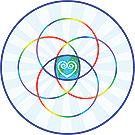
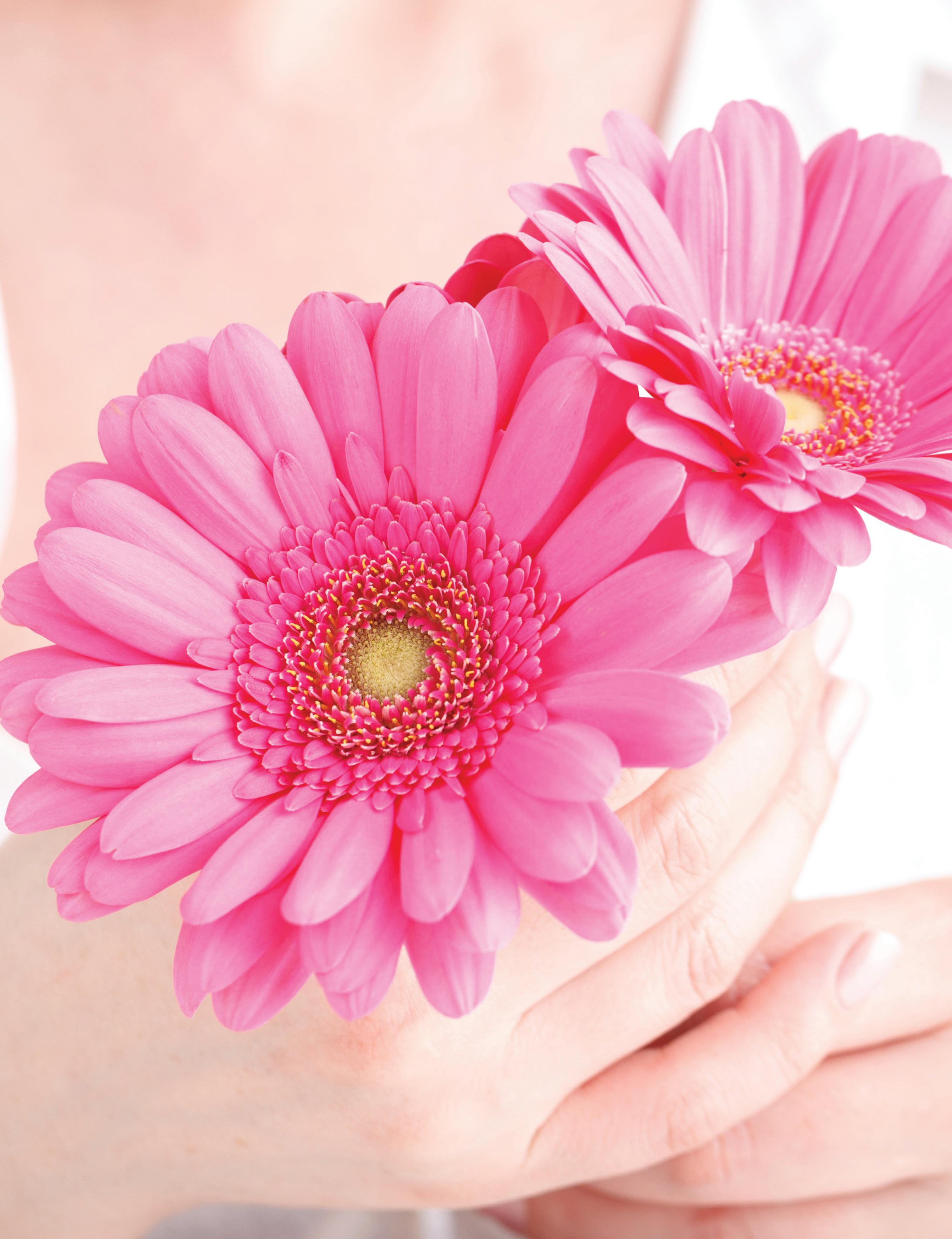
HEALTHY LIVING | HEALTHY PLANET FREE Women’s Wellness May 2024 Columbia Edition ColumbiaNaturalAwakenings.com

2 Columbia Edition ColumbiaNaturalAwakenings.com

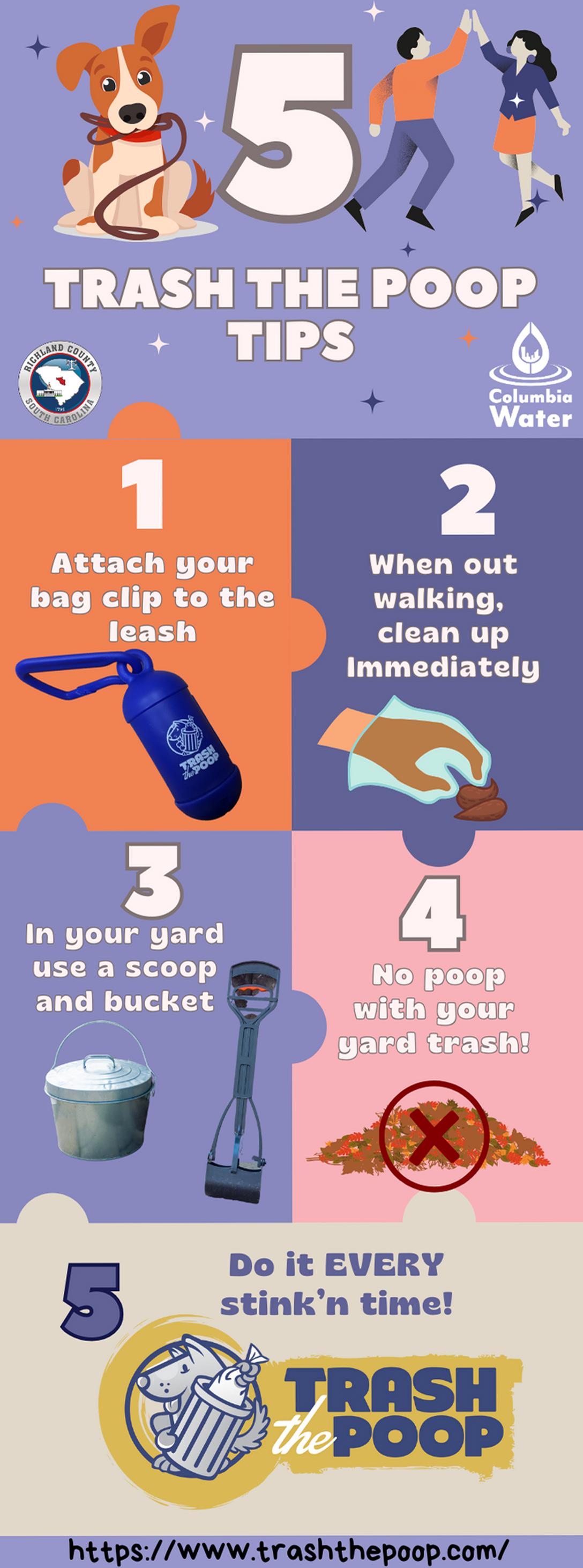
3 May 2024
COLUMBIA EDITION
Publisher Annette Carter Briggs
Editor Sara Gurgen
Design & Production Kristina Parella
Billy Briggs
Contributing Writers Odell Williams
Kristi Antley
Sales & Marketing Annette Carter Briggs
Website Kristina Parella
Billy Briggs
CONTACT US
PO Box # 8371
Columbia, SC 29202
Email
ColaPublisher@NaturalAwakenings.com
Annette Briggs Ph: 803-309-2101
Website ColumbiaNaturalAwakenings.com
SUBSCRIPTIONS
Subscriptions are available by sending $24 (for 12 issues) to the above address.
NATIONAL TEAM
CEO Kimberly B. Whittle
National Editor Sandra Yeyati
Editor Brooke Goode
Copy Editor/Proofing Melanie Rankin
Layout Flip180 Media
CONTACT US
Natural Awakenings
Publishing Corporation
350 Main Street, Suite 9B
Bedminster, NJ 07921
Ph: 239-206-2000
NaturalAwakenings@KnoWEwell.com
Cover image by Andrey Cherkasov Getty Images

Natural Awakenings is printed on partially recycled and fully recyclable newsprint with black soy ink.
© 2024 by Natural Awakenings. All rights reserved. Although some parts of this publication may be reproduced and reprinted, we require that prior permission be obtained in writing.
Natural Awakenings is a free publication distributed locally and is supported by our advertisers. Please call to find a location near you or if you would like copies placed at your business. We do not necessarily endorse the views expressed in the articles and advertisements, nor are we responsible for the products and services advertised. Check with a healthcare professional regarding the appropriate use of any treatment.
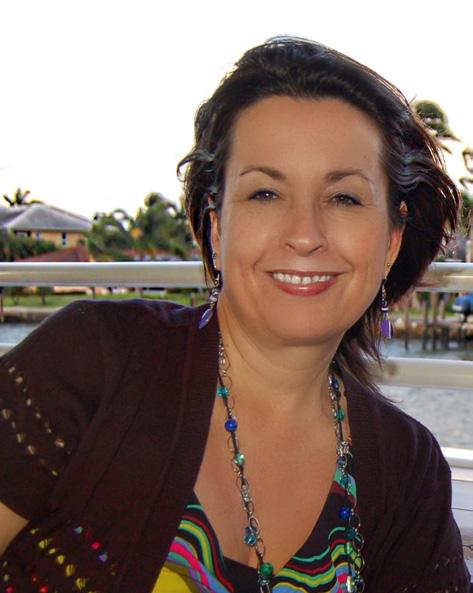
Your Inner Beauty … Make it Shine!
Greetings loyal readers and Happy May! This month’s editorial theme is women’s wellness, and I want to ask you a sincere question: Are you well … really? American model Erin Heatherton stated, “Inner beauty radiates from within, and there’s nothing more beautiful than when a woman feels beautiful on the inside.” I like her thinking.
At times, we as women tend to put more of our focus on how we look rather than how we feel. In fact, the cosmetic industry in the U.S. raked in a whopping $49.2 billion in 2019 from millions of women (and maybe one or two men, lol) seeking to feel better, and in some cases, trying to win acceptance and approval from others—including themselves. Let’s be real, everyone has chased after “the winning look” at some point. But what about one of the most important aspects of a human being, the inner person that lies inside beyond the peering view of mirrors and cameras? I’m talking about the mind, body, soul and spirit.
Do you make time for yourself? Your health and wellness (including that of the mind) is very important, and a fundamental element for successful and complete well-being. Leading an active lifestyle; choosing healthier dietary foods, such as fruits, fresh vegetables and leaner meats; and finding ways to stimulate and rejuvenate the mind are the building blocks for inner beauty that radiates from within. How important is it?
Let’s look at some sobering facts. According to the Centers for Disease Control, 45.2 percent of women age 20 and older battle hypertension (measured high blood pressure and/or taking anti-hypertensive medication). Moreover, two of the leading causes of death for women are cardiovascular disease and cancer. And sadly, 15.6 percent of women age 18 and over find themselves in poor and debilitating health.

Inner beauty is a direct byproduct of inner healing, which comes from wiser living. We all want to look good (I know I do); however, we should never barter away feeling great for just looking good, which might only be superficial and very misleading. Like an iceberg, what one sees above the surface is only a fraction of what actually lies beneath.
Take time to educate yourself on smarter health and wellness choices—the magazine that you are enjoying right now is a great place to start your journey toward what Heatherton called “inner beauty that radiates from within.” Trade the couch for a walking trail and the television for a meditation session or very good book.
Why not start today? You look amazing … why not feel the same way for yourself and for the benefit of those that love you most?
Living from the inside out,
 Annette Carter Briggs, Publisher
Annette Carter Briggs, Publisher
ColumbiaNaturalAwakenings.com
4
Edition
Publisher’s Letter
Columbia
HEALTHY LIVING HEALTHY PLANET






5 May 2024 6 Community News 11 Global Briefs 12 Health Briefs 13 Eco Tip 14 Healthy Kids 16 Conscious Eating 19 Feature Story 22 Healing Ways 24 Natural Pet 26 Green Living 29 Calendar 30 Resource Guide Departments Contents 14 19 16 24 13 Sustainable Menstrual Options 14 Natural Births 16 Balancing Gluten 19 The Road to Hormonal Harmony 22 Identifying and Treating Lyme Disease 24 Raising Puppies to Be Heroes 26 Female Environmentalists
ICRC Hosts Pickin’ & Piggin’ BBQ Cook-Off Fundraiser

On Saturday, May 4, from 11 a.m. to 1:30 p.m., the Irmo Chapin Recreation Commission (ICRC) is hosting its Pickin’ & Piggin’ event at Saluda Shoals Park. The barbecue cook-off and music celebration will feature savory, award-winning barbecue from more than 20 of South Carolina’s best barbecue cooks for tasting and eating. Great live music will also be featured. Beer, wine and non-alcoholic beverages will be served. This event is open to everyone; however, IDs will be needed for beer and wine purchases.
Cost: $15, people 13 years of age and up; $5, children 12 and under. Location: 5605 Bush River Rd., Columbia. For more information, call 803-772-1228 or visit icrc.net.
ICRC Hosts Its Backyard Saturday–Worms Event
On Saturday, June 1, from 10 a.m. to noon, the Irmo Chapin Recreation Commission (ICRC) is hosting its Backyard Saturday–Worms event at the Cattail Shelter in the Wetland (a new activity area located at Saluda Shoals Park). A great experience for the entire family, this ranger-led outing will include an interactive hike, sensory animal games, science lab activities, and forest sensory play.
Cost: $5 parking fee. Location: 5605 Bush River Rd., Columbia. For more information, call 803-772-1228 or visit icrc.net/event/backyard-saturday-worms.


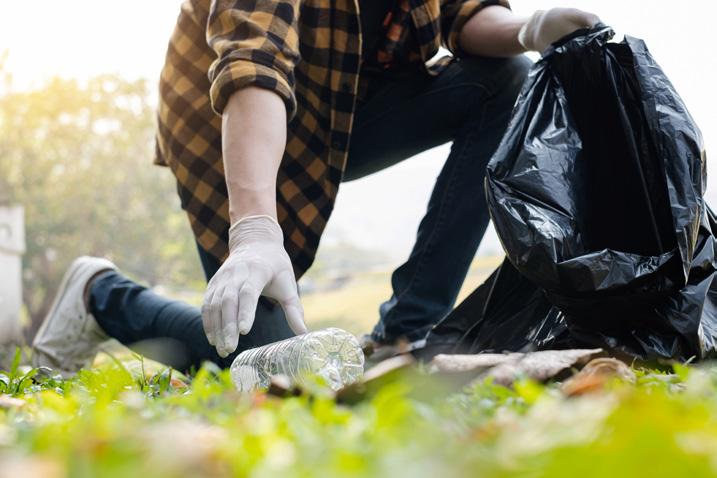
KMB Hosts Spotless Service Saturday in May
On Saturday, May 25, from 9 a.m. to noon, Keep the Midlands Beautiful (KMB) is hosting its Spotless Service Saturday project. The KMB team and its volunteers will pick up litter along the town of Irmo’s Rawls Creek. Check-in begins at 8:45 a.m. at the Irmo Townhall parking lot, located at 7300 Woodrow Street. Participants will then be directed to specific areas to work in small groups. All participants will receive bottled water and a take-home gift. Safety instructions and all necessary supplies will be provided. Volunteers are encouraged to dress appropriately. Preregistration is required. KMB created Spotless Service Saturday projects to help to decrease and mitigate litter accumulation on roadways and green spaces in the Midlands.
For more information, call 803-733-1139 or email Programs@kmbsc.org. Also visit KeepTheMidlandsBeautiful.org.

6 Columbia Edition ColumbiaNaturalAwakenings.com Community News
ICRC Hosts Guided Paddle of the Lower Saluda River

On Saturday, May 11, from 10 a.m. to noon, the Irmo Chapin Recreation Commission (ICRC) is hosting a guided paddle tour of the lower Saluda River. Participants will learn about the natural history of the local area and will get the chance to explore one of two island destinations, ride the rapids, learn about the Lake Murray Dam, swim, observe local wildlife, and much more. This is a great opportunity to explore the Midlands’ local waterways. Event gear and a return shuttle will be provided; however, attendees are asked to bring water shoes.
Cost: See website for details. Location: Saluda Shoals Park, 5605 Bush River Rd., Columbia. For more information, contact Justin Johnson at 803-213-2054 or WJohnson@icrc.net. Also visit icrc.net/event/guided-paddle-trip-saluda-river-0. See ad, page 10.
KMB Hosts Shoe Recycling Drive

Continuing through Friday, May 31, Keep the Midlands Beautiful (KMB) is hosting its Shoe Recycling Drive to support local area conservation and sustainability while helping families in need. The shoes collected through this effort would otherwise find their way to local landfills. KMB encourages local families, neighborhoods, businesses and church congregations to join the effort by organizing group campaign support. KMB will supply the bags. Any style and size of gently worn shoes are accepted.
For more information, call 803-733-1139, email Info@kmbsc.org or visit KeepTheMidlandsBeautiful.com.
Backyard Saturdays–Flowers
On Saturday, May 4, from 10 a.m. to noon, the Irmo Chapin Recreation Commission (ICRC) is hosting its Backyard Saturday–Flowers event at Saluda Shoals Park, located at 5605 Bush River Road, in Columbia. The fun-filled day is designed to celebrate and highlight Saluda Shoal’s natural beauty and amenities through entertaining activities and cool biofacts discovery. Participants will enjoy a ranger-led guided hike, sensory animal games, and forest sensory play. This event is great for families.
Cost: $5. For more information, call 803-772-1228 or visit icrc.net/ event/backyard-saturday-flowers.


7 May 2024


SCWF Hosts Its Volunteer Day

Calling all volunteers! The South Carolina Wildlife Federation (SCWF) is hosting a volunteer planting day on Monday, May 13, from 10 a.m. to 1 p.m. Volunteers, along with SCWF staff members, will work together to plant greenery around the SCWF office, located at 1519 Richland Street, in Columbia. Lunch will be provided.
For more information, call 803-256-0670 or visit scwf.org/events/2024/ volunteer-day-planting.
The Bees and Blossoms Spring Fundraiser

The Living Wright Foundation is pleased to announce its second annual Bees and Blossoms Spring Fundraiser, taking place on Thursday, May 23, from 6 to 9 p.m. Event highlights include live jazz music by Dr. Craig Witherspoon (superintendent of Richland School District One), a silent auction and live auction by auctioneer Jimmy Derrick, hors d’oeuvres featuring local chefs, signature cocktails inspired by what’s growing in the gardens, a wine pull, live art and more.
The Living Wright Foundation’s mission is to combat food insecurity by providing fresh produce to individuals in need in the Midlands and by educating the local community though regenerative gardening techniques. The organization’s initial project site located at Senate’s End will be followed by a future project site at 2505 Chestnut Street, in Columbia. The Living Wright Foundation is a nonprofit, tax-exempt organization founded by Robert Percival and his father, Dupre Percival. It was named to honor Robert’s grandfather, the Rev. Dr. R. Wright Spears.
All of the event proceeds will be used to support The Living Wright Foundation’s mission. The event sponsorship levels are as follows: premier level: $5,000, partner level: $2,500, gold level: $1,000 and silver level: $500.
Cost per ticket: $75. Location: The Hall at Senate’s End, 320 Senate St., Columbia. For more information, including sponsorship details, email Info@LivingWrightFoundation.org or visit LivingWrightFoundation. org/bees-blossoms. See ad, opposite page.
8 Columbia Edition ColumbiaNaturalAwakenings.com Community News
The 2024 South Carolina Ag + Art Tour

The South Carolina Ag + Art Tour is a free, self-guided tour of farms and markets featuring local artisans at every stop. The S.C. Ag + Art Tour includes farms and artisans located in 11 counties, with different counties participating each weekend in May and June on Saturdays from 10 a.m. to 4 p.m. and Sundays from 1 to 5 p.m. This popular farm and art tour is a great way for residents to learn about where their local food, fiber and forest products come from and to meet local artisans.
Tour stops include farms, farmers markets and other agriculture- and art-related establishments, with artisans at each location. Artisans on the tour range from weavers, painters, musicians, storytellers, metalworkers and craftsmen to poets and live musical performances. Some farms will offer value-added products, such as jarred and canned foods, honey, baked goods or even farm-fresh meals.
For more information, including a list of participating sites, dates and artisans, visit AgAndArtTour.com. See ad, page 23.


9 May 2024
Free Environmental Education Training Workshop

The Nature as a Teacher Preserve Organization is hosting a free environmental education training workshop from Tuesday, May 28, through Thursday, May 30, from 9 a.m. to 2 p.m., at 247 Chestnut Ferry Road, in Camden. This is a certification class, and by achieving it, one can host groups at the preserve, use Nature as a Teacher Preserve resources in their respective learning environments, and assist with the organization’s programs and as a certified volunteer. Attendees are encouraged to bring a bag lunch.
For more information or to register (required by Wednesday, May 15), contact Leonci Cruz at LeonciC@Clemson.edu or visit Forms.gle/wNvB31AnRzk2ySiPA.
Camp Discovery Hosts Fun Summer Camps

ICRC Hosts Paddle and Pint
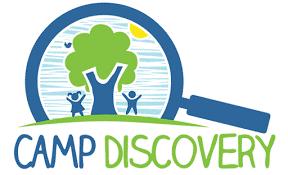
Ready for summer camps! This summer, Camp Discovery is hosting a wide variety of camps for kids and teens from age 6 to 15. Campers will have the opportunity to discover, explore, learn and connect with the natural world around them. Attendees will also engage in nature hikes, scavenger hunts, arts and crafts, outdoor games, and much more. Space is limited, so advance registration is strongly suggested. Camp Discovery originated as a recreation therapy program serving children and youth in most need throughout our community. Since then, the population that the camp serves has continued to expand alongside the camp’s offerings that now include handson, nature-based experiences for people of all ages and backgrounds.
Cost: Varies (see website for details). Location: 208 Claude Bundrick Rd., Blythewood. For more information, call 803-754-2008 or visit Camp-Discovery.Jumbula.com.
On Friday, May 24, from 6 to 8 p.m., the Irmo Chapin Recreation Commission (ICRC) is hosting its Paddle and Pint event at Saluda Shoals Park. For adults ages 21 and up, participants will enjoy the scenic view while paddling the Lower Saluda River, fully surrounded by beautiful scenery and S.C. wildlife. After spending an hour on the water, guests will then have the opportunity to sample delicious craft beers at the River Overlook. Boats and all necessary equipment needed will be provided. All participants will take home a complimentary Saluda Shoals Park glass. As a note, the trip is dependent upon weather and river levels.
Cost: $47 per person. Location: 5605 Bush River Rd., Columbia. For more information, contact Amanda Michael at 803-213-2062 or AMichael@icrc.net. Also visit icrc.net/event/ paddle-and-pint. See ad, this page.

10 Columbia Edition ColumbiaNaturalAwakenings.com Community News NA Paddle Ad 24.indd 1 4/26/2024 10:15:46 AM
Hydrogen Reservoirs
A recent study published in the journal Science reveals the discovery of a large hydrogen gas deposit deep within the Bulqizë chromite mine, in Albania. The findings have sparked optimism among researchers that there may be substantial underground reservoirs of hydrogen capable of meeting global power demands for a low-carbon solution. Hydrogen can be burned without releasing greenhouse gases.
While hydrogen is the most abundant element in the universe, access to it on Earth has been limited, as it tends to escape into the atmosphere. The existence of natural hydrogen seepages has been known for thousands of years, but it was believed that only small amounts of hydrogen could be found underground. This perception has been challenged in recent years, when significant hydrogen gas reservoirs were discovered in Mali, Europe and South America.
The research team believes that the Bulqizë mine holds 5,000 to 50,000 tons of hydrogen—well short of the millions of tons sought by energy-focused prospectors. Nevertheless, this discovery is confirmation that hydrogen gas can be trapped effectively underground. The technological means to efficiently extract and utilize these reservoirs are still in development.

Gray Whale Spotted in the Atlantic
The New England Aquarium reported an aerial sighting of a gray whale 30 miles off the coast of Nantucket Island. Gray whales, which lack dorsal fins, have not been seen in the Atlantic Ocean for more than 200 years, having been hunted out of existence. This is the fifth sighting in Atlantic and Mediterranean waters in the last 15 years. Scientists believe that the melting of Arctic ice caused by global warming may be at play.
According to the aquarium, “The Northwest Passage, which connects the Atlantic and Pacific through the Arctic Ocean in Canada, has regularly been ice-free in the summertime in recent years, partly due to rising global temperatures.” Without the sea ice that usually limits the range of gray whales, they can “potentially travel the Passage in the summer, something that wouldn’t have been possible in the previous century.”
Orla O’Brien, an associate research scientist in the aquarium’s Anderson Cabot Center for Ocean Life, said, “These sightings of gray whales in the Atlantic serve as a reminder of how quickly marine species respond to climate change, given the chance.”


11 May 2024
Tom Fisk from Pexels/CanvaPro
Global Briefs
Gerald Corsi from Getty Images Signature/CanvaPro
Nature Lowers Risk of Osteoporosis
In a study published in Annals of the Rheumatic Diseases, scientists investigated the effects of green spaces on osteoporosis and bone mineral density by analyzing data held in the UK Biobank of almost 400,000 people with an average age of 56, just over half of whom were women. In addition to the participants’ bone mineral density, the researchers calculated annual average exposures to air pollutants, such as nitrogen oxide and particulate matter, based on residential postal codes. Those living closer to green spaces, natural environments and domestic gardens had greater bone mineral density and a five percent lower risk of developing osteoporosis. In addition to air pollution, the scientists noted that psychological stress and physical activity levels appeared to influence the impact of green spaces on osteoporosis risk.
According to the Centers for Disease Control and Prevention, the prevalence of low bone mass, a precursor of osteoporosis in adults 50 and older, is 51.5 percent in women and 33.5 percent in men. Osteoporosis weakens bones; increases the risk of fractures, chronic pain, reduced mobility and disability; and reduces quality of life. It affects nearly 20 percent of women and 4.4 percent of men.
Low-Dose Calcium Supplementation in Pregnancy
Hypertensive disorders of pregnancy, which include preeclampsia, complicate 2 to 8 percent of pregnancies and are estimated to cause 45,000 maternal deaths annually worldwide. These disorders are also associated with an increased risk of preterm birth, the leading cause of death among children worldwide.
Calcium supplementation of 1500 to 2000 mg per day, divided into three doses, during pregnancy has been recommended by the World Health Organization (WHO) since 2011 to reduce the risk of preeclampsia in populations with low dietary calcium intake. Previous trials of high-dose calcium supplementation of at least 1000 mg per day reduced the risk of preeclampsia by more than half and the risk of preterm birth by 24 percent. However, only a few countries have implemented routine high-dose calcium supplementation in pregnancy due to adherence concerns and high cost.
The findings of two independent, randomized trials conducted in India and Tanzania to compare the efficacy of low-dose calcium
Treating Fibromyalgia with Cognitive Behavioral Therapy
Fibromyalgia is a chronic disorder that causes pain and tenderness throughout the body, fatigue and sleeping difficulties. Scientists do not fully understand what causes it. In a randomized, controlled study published in Arthritis & Rheumatology involving 114 women, researchers found that cognitive behavioral therapy (CBT) was superior to educational materials alone in reducing catastrophic negative thinking associated with fibromyalgia.
CBT is a form of psychological treatment that usually involves efforts to change thinking and behavioral patterns. Strategies include facing fears instead of avoiding them, using role play to prepare for potentially problematic interactions and learning to calm the mind and relax the body.
To measure the participants’ responses to CBT, researchers used various assessment tools alongside functional magnetic resonance imaging (fMRI), which measures the small changes in blood flow that occur with brain activity. The participants that received eight weeks of CBT experienced a reduction on the Pain Catastrophizing Scale, compared to a smaller drop in the group that received only educational materials. Furthermore, fMRI scans indicated changes in brain patterns following CBT, suggesting its effectiveness in addressing catastrophic thoughts. By providing evidence of tangible brain changes, this research can help validate the reality of chronic pain, which is often dismissed as being “all in your head.”
supplementation (500 mg per day) to high-dose calcium supplementation (1500 mg per day) in reducing the risk of preeclampsia and preterm birth was recently published in The New England Journal of Medicine. In each trial, 11,000 first-time pregnant women were enrolled. The results indicate that low-dose calcium supplementation was as effective as the high-dose in terms of the risk of preeclampsia. The trial in India, but not the one in Tanzania, showed that the low-dose calcium supplement was as effective as the high-dose with respect to preterm birth.

12 Columbia Edition ColumbiaNaturalAwakenings.com Health Briefs
Ivan Jekic from Getty Images Signature/Canva Pro
Sustainable Menstrual Options
The ecological impact of disposable feminine hygiene products is substantial. Nearly 20 billion sanitary napkins, tampons and applicators are thrown into U.S. landfills every year, generating more than 200,000 tons of waste. Most of these products are made of (and wrapped in) non-biodegradable plastic and contain dangerous pesticide residues, bleach and phthalates. From an economic standpoint, the average woman spends about $12,800 on menstrual care in her lifetime.
To reduce the plastic waste that languishes in landfills and waterways, environmentally conscious women are increasingly turning to more sustainable options, including reusable, biodegradable and organic products that are healthier for both people and the planet without compromising on functionality. Although reusable products are more expensive, they are worn over and over again for years, making them more cost-effective in the long run.
Eco-Friendly Menstrual Products
Menstrual Cup: Made with medical-grade silicone, this alternative to disposable tampons is worn inside the vagina to collect flow, rather than absorb it. It is safe and easy to use. A cup holds four to six times more than a single tampon or pad, and it can be worn for up to 12 hours before rinsing and reinserting. Most people have to empty it only in the morning and evening.
Menstrual cups can be worn while swimming, running or dancing. To sterilize between periods, a one-to-two-minute boil
and thorough drying keeps the cup ready for next time. With proper care, a cup can last years.
Period Underwear: Absorbent, machine-washable and hygienic, period underwear uses a layered approach to leak-proofing with a moisture-wicking top layer, absorbent core layer and waterproof liner. Simply rinse after use and drop it in the next load of laundry.
Reusable Pads: Thin and flexible, reusable pads can absorb more than a disposable counterpart and typically last three to five years. Some companies make their reusable pads from organic cotton and spandex, with edge-to-edge protection and snap closures to keep them in place. Simply rinse them in cold water and throw them in the washing machine. For lighter days, reusable pantyliners are also available.
Organic Tampons and Pads: Although disposable, tampons and pads made from organic cotton are healthier for both
people and planet because they are free of BPA-plastic, dyes, pesticides, dioxins, fragrance, chlorine or other synthetic materials. Look for companies that provide plastic-free applicators and compostable wrappers and packaging.
Eco-Friendly Companies
• Cora.life
• Natracare.com
• PublicGoods.com
• PeriodAisle.com
• TheJuneCup.com
• ShopDiva.com
• Saalt.com
• Period.co
• ShopProof.com
• ItsAugust.co
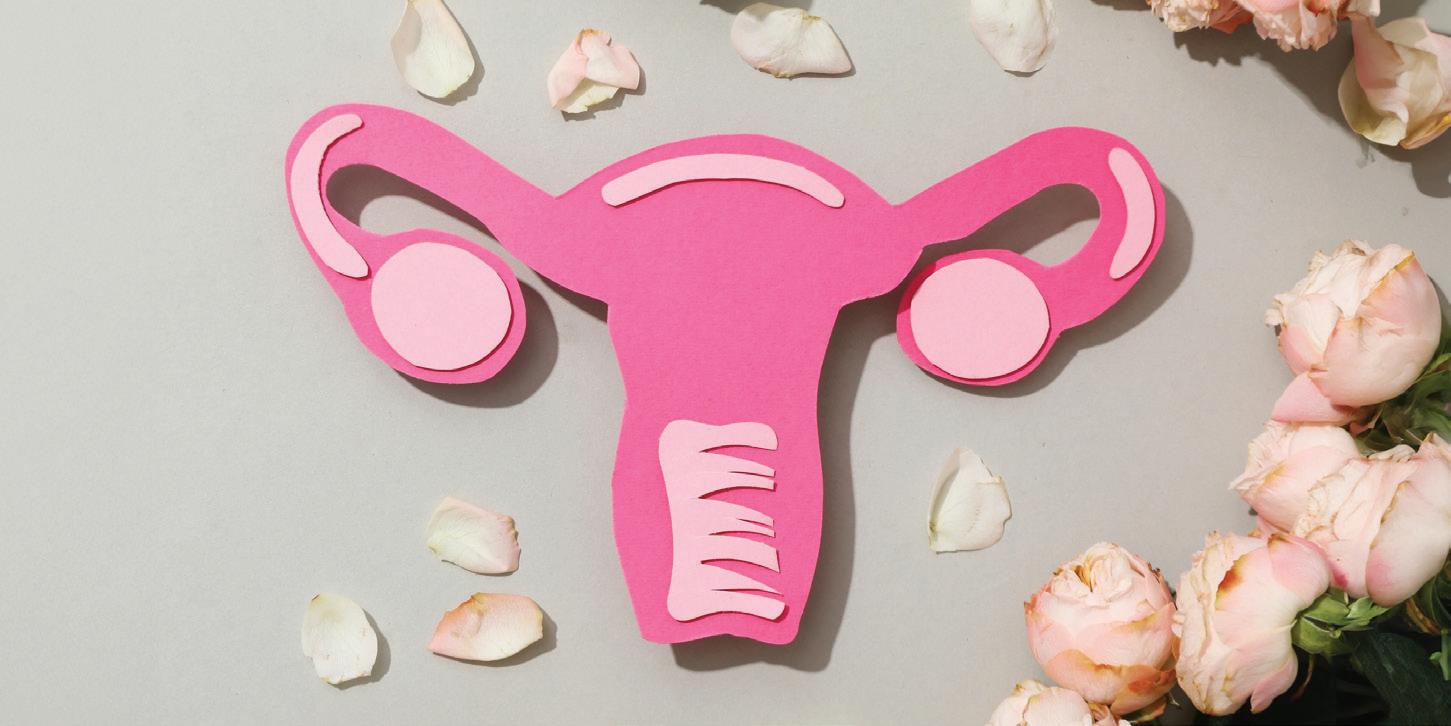
13 May 2024
Eco Tip
atlasstudio/CanvaPro
Natural Births
A Look at Modern Midwifery
by Maya Whitman
Life’s most wondrous gifts are the babies that come into the world every day, but the clinical birth environment is not always an ideal choice for everyone. Modern midwifery, a safe alternative, honors its ancient roots by aiming to provide a comfortable and beautiful passage for both mommas and little ones. In countries like France, Sweden and Japan, midwives are involved in almost 75 percent of deliveries at birth centers, homes and hospitals. The practice is less popular in the U.S., with only 12 percent involving midwives in 2020.
“The birth experience became very medicalized at the turn of the last century out of necessity. However, midwives have been
delivering babies for centuries in all types of settings. Birth is a natural process that does not necessarily need to take place within the confines of the hospital setting,” says Paul Quinn, a certified nurse-midwife in Ridgewood, New Jersey, and author of several books, including Prenatal Possibilities: Recipes for a Healthy Pregnancy…and Beyond.
Prenatal and perinatal psychologist Susan Highsmith, in Tucson, Arizona, notes, “Care in birth centers and at home can be far more personal. For women who experience low-risk pregnancies, a natural, home birth or birth-center birth can be a satisfying and safe alternative to a hospital birth. There are a host of benefits for the baby that
are not possible in hospital settings where protocols take precedence.”
One of the advantages of a natural birth is the mother-child bonding encouraged in a non-clinical setting. “Babies should not be placed in nurseries, but should be immediately placed on the mother’s body and allowed to seek and find the breast,” Highsmith explains. “Being taken away from the mother, as is frequently done in hospitals, is anathema.”
Midwives and Doulas
Aside from facilitating the birth process, midwives can provide medical care, prescribe medications and order blood tests and imaging. Many are nurses and wellversed in any situation that might arise before, during and after labor.
Doulas focus on nonclinical care by providing physical and emotional comfort, keeping expectant mothers informed and facilitating communication with the midwives and obstetricians on the team. For Brooke Stenzler, a relationship coach in Bradenton, Florida,

14 Columbia Edition ColumbiaNaturalAwakenings.com
Maridav/CanvaPro Healthy Kids

bringing a doula onto her birth team was an unexpected blessing. “It freed up my husband to be present in a different way, and the doula provided the tender, maternal care that I needed,” she says. “Prior to the birth, I met with my midwife for regular prenatal checkups. She came to my house a month or so prior to the expected birth date to make sure everything was set up properly for a home birth. I also had a couple of meetings with my doula prior to the birth, so she could get clear on my goals and needs. She also provided a prenatal massage.”
Stenzler and her brothers were all homebirth babies, so when it came time to plan her own pregnancy, choosing to have a midwife and a doula was an effortless decision. Her own midwife was seasoned, thus earning her confidence. “She knew what signs to look for if there were a serious situation that might require transferring to a hospital,” she says. “I trusted that she would let me know if she felt that was necessary.”
Taking the Helm
Choosing to partner with a midwife and/ or doula can be the first big step in a happy, healthy birth, but there are some things to consider. State laws differ as to what a
midwife can and cannot do, and insurance coverage varies from company to company. Thorough research is recommended to avoid any last-minute surprises.
Quinn recommends beginning a search for the right person as early as possible. “Not all midwives or doulas practice the same. There needs to be a sense of trust, and a woman needs to choose someone who makes her feel safe, heard, respected and valued,” he advises. “It’s okay to ask focused questions and inquire about a midwife or doula’s education. Ask for references. Check the internet for reviews, both good and bad, and verify if licensure is applicable. It’s also a good idea to check for any disciplinary action from the state.”
Bringing the next generation into the world is a hard job, one that demands support for body, mind and spirit. “Ask any questions that relieve fears, doubt or uncertainty beforehand. This is a mutually loving and, literally, life-enhancing relationship,” says Highsmith. “Birth is a sacred event, which deserves reverence.”
Maya Whitman is a regular writer for Natural Awakenings.


15 May 2024
Images Signature/CanvaPro
ideabug from Getty

Balancing Gluten
Making Peace With an Oft-Maligned Ingredient
by Deborah Bevilacqua
The rise in prevalence of celiac disease and related conditions, and shifts toward paleo, keto and other gluten-free diets, have driven the gluten-free products market from $973 million in 2014 to $6.5 billion in 2022. The market for these products is expected to reach $15.1 billion by 2032 according to The Brainy Insights, a market research company. However, switching to gluten-free products is not a one-size-fits-all decision.
Celiac disease affects an estimated 1 percent or approximately 3 million Americans, although approximately 60 to 70 percent of those have not been diagnosed, according to the Celiac Disease Foundation. The illness is an autoimmune condition that results in tissue damage in the small intestine, which may be accompanied by abdominal pain, gas and bloating, cognitive impairment, constipation, diarrhea, anxiety, fatigue, anemia, skin rashes and joint pain. It is diagnosed with blood tests and confirmed by taking pictures inside of the small intestine.
The National Institutes of Health report an additional 6 percent of Americans may have a related condition known as non-celiac gluten sensitivity (NCGS). While some symptoms of intolerance or sensitivity to gluten are similar to those with celiac disease, NCGS does not come with intestinal damage. Symptoms of NCGS also may occur outside the intestines such as heartburn, feelings of fullness, vomiting, headaches, anxiety, depression, a foggy mind and fibromyalgia-like symptoms.
For those allergic to wheat or other grains containing gluten or that have gluten-related disorders, permanently eliminating gluten is a must. This includes inhaling it, eating it and encountering it through skin or hair.
Gluten and the Gut
Gluten is a protein found in grains such as wheat, spelt, semolina, farro, barley and rye. These grains are a source of fiber, B vitamins, trace minerals and other nutrients. Many studies have associated whole-grain consumption with improved health outcomes. For instance, as part of a healthy diet, wheat has been found to reduce the risk of diabetes, heart disease and weight gain.
Gluten interplays with the bacteria in the gut. The journal Nutrients published a review in 2021 of various studies that evaluated the effects of a gluten-free diet on the microbiome of healthy, celiac disease and NCGS patients. The researchers found that a gluten-free diet reduced the bacterial richness and affected gut microbiota composition of patients in all three groups. In patients with celiac disease or NCGS, the gluten-free diet created a positive effect on gastrointestinal symptoms and helped restore microbiota population by reducing the population of pro-inflammatory species. However, in
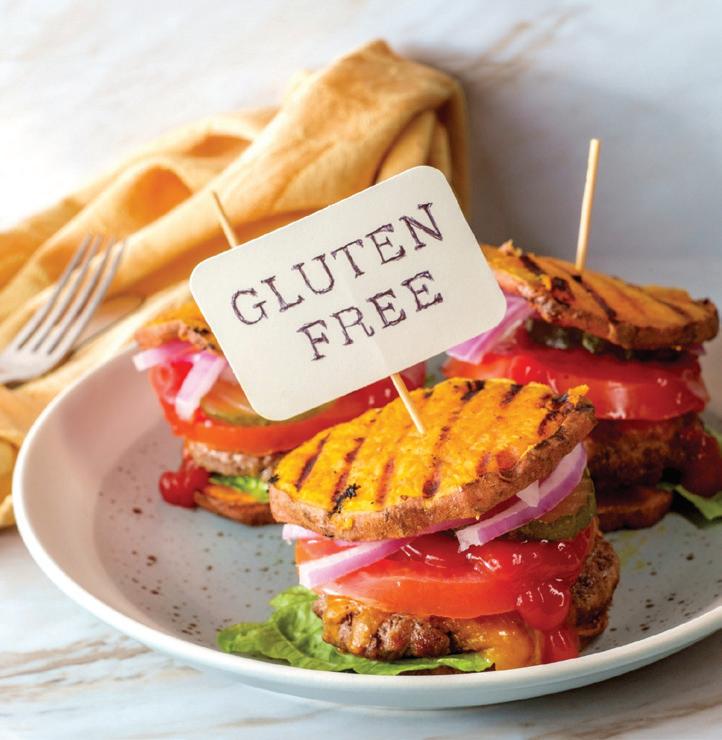
16 Columbia Edition ColumbiaNaturalAwakenings.com
EzumeImages from Getty Images/CanvaPro Olga Larionova from Getty Images/CanvaPro Conscious Eating
healthy patients, a gluten-free diet had a negative effect on the gut by decreasing the number of beneficial species and increasing the number of bad microorganisms.
According to the Harvard T.H. Chan School of Public Health, changes in the amount or activity of good bacteria have been associated with gastrointestinal diseases such as inflammatory bowel disease, colorectal cancer and irritable bowel syndrome.
“Changes in your diet can alter your microbiome within one to two days,” says Dr. Tom O’Bryan, an expert on wheat-related disorders, NCGS, celiac disease and their link to autoimmune diseases. “When you go on a gluten-free diet, you remove prebiotics that feed the good bacteria in your gut. This then causes the bad bacteria to flourish and reproduce, resulting in increased inflammation in your gut, a contributor to disease.” This makes sense as 70 to 80 percent of immune cells are present in the gut.
Effective Gluten-Free Dieting
Whether a gluten-free diet is required because of a gluten-related disorder or by choice, it is essential to add prebiotic foods to replace the beneficial impacts lost when eliminating wheat and other grains. Prebiotic and probiotic supplements are a start, but consumption of vegetables is the key.
“Probiotics are most effective when they are combined with a high-fiber diet featuring a variety of vegetables,” says O’Bryan. He recommends at least one daily serving of root vegetables, such as rutabaga, turnip, parsnip, radish, carrot and sweet potato, and two daily servings of prebiotic foods like bananas, garlic, onion, asparagus, leafy green vegetables, legumes, artichoke, apples and cocoa. “I also recommend a forkful or more of fermented foods each day. Vary it up with some sauerkraut, kimchi, miso or fermented beets, or drink some kefir or kombucha.”
“If you're experiencing digestive discomfort, give a healthy, gluten-free diet a try for at least 30 days and assess how you feel,” recommends Michelle Ross, a board-certified

nutrition specialist, licensed dietician and functional medicine practitioner. “My recommendation is to stay away from the gluten-free aisle. The truth is many people that switch to a gluten-free diet often turn to processed gluten-free foods. The focus should be on consuming whole, real, unprocessed foods.”
Finding Balance
Even for those without gluten-related conditions, too much gluten can create its own health complications. In a 2015 study published in Nutrients, gliadin, a component of gluten, was administered to biopsies taken from the small intestines of healthy, celiac disease and NCGS patients. The researchers found each group experienced increases in inflammatory markers and in markers of leaky gut, with the healthy group having the greatest increase in interleukin 10, a rapidly activated pro-inflammatory cytokine that defends the body against microbial invasion.
For otherwise healthy people, finding a balance between enough gluten to feed gut probiotics but not so much that it results in gut permeability issues is important. “If you decide to continue consuming gluten, opt for whole or minimally processed einkorn wheat, rye, barley, spelt and Kamut wheat,” says Ross. “These grains have not undergone hybridization and are not typically sprayed with glyphosate before harvesting. Additionally, consider consuming sprouted or fermented forms of these grains, as they can be more digestible.”
Deborah Bevilacqua is a journalist and contributor to Natural Awakenings Publishing Corporation.
17 May 2024
Easy Fertility Kitchari (Quinoa and Bean Stew)
YIELD: 6 SERVINGS
2 cups dried mung beans, soaked in water for 8-12 hours
1 Tbsp coconut oil, ghee or olive oil
1 onion, finely chopped
4 garlic cloves, finely chopped
1 tsp ground cumin
14 oz spinach, kale, collards or any other greens
2 tsp Celtic sea salt
1 13.5 oz can full-fat coconut milk
2 cups quinoa
7½ cups water
Optional: cilantro, avocado
Heat oil in a pressure cooker (such as an Instant Pot); add onion, garlic and cumin. Sauté until fragrant; stir occasionally. Add greens, soaked mung beans, quinoa and water. Put the lid on, and pressure cook for 12 minutes. Once pressure has fully released, open the lid and stir in coconut milk. Top it off with fresh avocado and cilantro before serving.
Recipe courtesy of Aumatma Simmons.
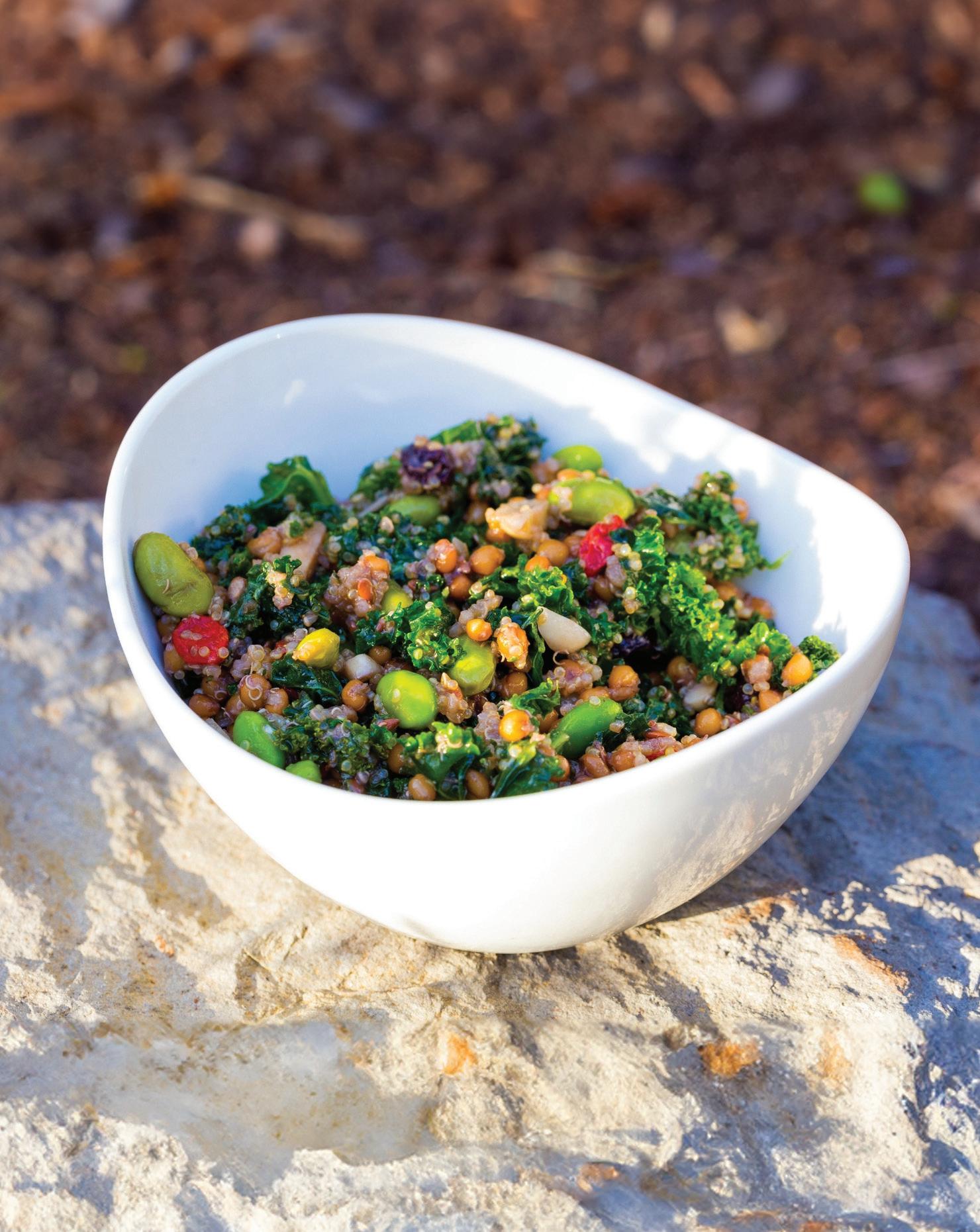

Purple Cauliflower Salad
This salad is full of cruciferous vegetables, including cauliflower, broccoli and Brussels sprouts, which have a nutrient called diindolylmethane (DIM) that helps process estrogen in a healthier way. Pumpkin seeds are a great source of zinc, which supports progesterone production, and magnesium, which can help with period cramps. Avocado and olive oil are rich in hormonesupportive omega-3s.
YIELD: 4 SERVINGS
1 head purple cauliflower
¼ head white cauliflower
¼ head broccoli or 1 cup Brussels sprouts
2 Tbsp canned red kidney beans (optional)
½ avocado, sliced
1-2 Tbsp pumpkin seeds
1 Tbsp olive oil or avocado oil
Pinch of salt
Dash of black pepper
Preheat oven to 320°F. Cut cauliflower and broccoli into florets (or slice Brussels sprouts in half) and add them to a baking tray. Drizzle the veggies with olive oil, season with salt and pepper, and place into preheated oven to roast for about 15 minutes. Stir the vegetables and roast for another five to 10 minutes until fork-tender and golden brown. Remove from oven and set aside to cool. Combine with other ingredients.
Recipe courtesy of Deborah Matthew.
Sewcream from Getty Images/CanvaPro
joshu arainey photography from Getty Images/CanvaPro
The Road to Hormonal Harmony
Finding Balance and Thriving
by Marlaina Donato
Like a well-built home, the human body’s quality of life depends upon a sturdy foundation. A complex, hormonal matrix determines our vitality and impacts major areas of health, including growth and development, stamina, sleep cycles, bone health, blood sugar levels, fertility, weight and mood. Fifty hormones take turns keeping us alive, as well as impacting lesser concerns such as hair and skin quality.
Excessive stress, certain pharmaceutical medications, hormonal contraception, autoimmune diseases and, in rare instances,
tumors can throw the body into metabolic chaos. Supporting these fundamental allies through lifestyle changes that include a nutrient-packed diet, improved gut health, supplementation and medication, when needed, can help us get back on track. Most importantly, prevention is possible with the same approach.
“Hormones are the behind-the-scenes influencers, ensuring your body operates smoothly and adjusting to the ever-changing demands of your environment and internal states. When this delicate balance is thrown
off, the consequences can be widespread, affecting virtually every aspect of your health,” affirms North Carolina-based hormone specialist Deborah Matthew, M.D., author of This Is Not Normal: A Busy Woman’s Guide to Symptoms of Hormone Imbalance
Even a slight imbalance of certain hormones—whether a deficiency or an excess—can compromise digestion, raise low-density lipoprotein (“bad” cholesterol), downgrade sex drive, foster cognitive issues, amp up anxiety and even affect heart rhythm. Lifestyle factors like smoking, poor diet and
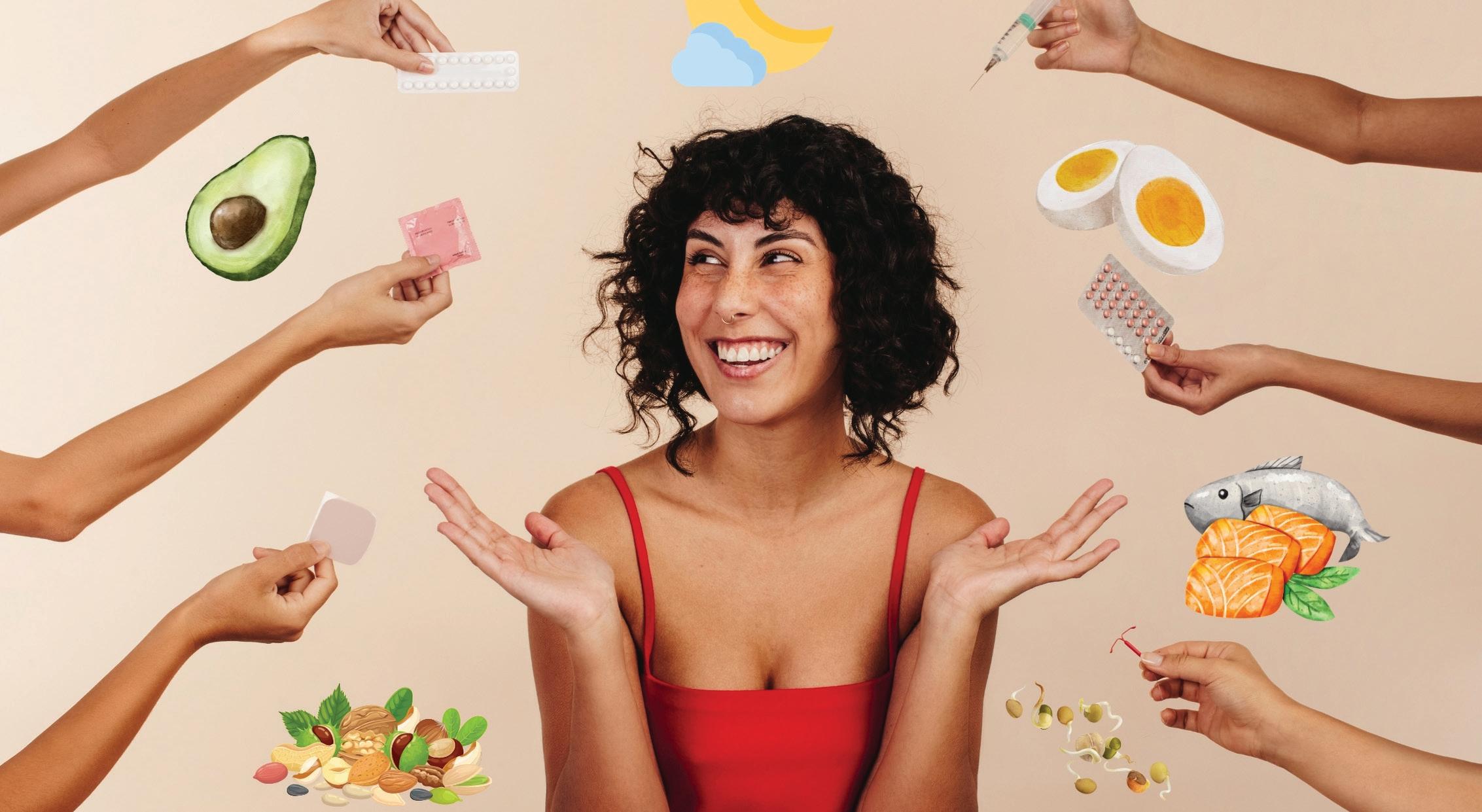
19 May 2024
JLco Amaral from Getty Images/CanvaPro Feature Story
lack of exercise also play a role in disturbing equilibrium. Matthew explains, “Hormones are chemical messengers that coordinate many functions well beyond the realm of reproductive health. They are produced by your endocrine glands and circulate through your bloodstream, delivering critical instructions to every tissue and organ.”
Oxytocin and Other Key Players
Like orchestra players, hormones work together, but the hormone oxytocin is the conductor. Hormones such as estrogen and testosterone, as well as the neurotransmitters dopamine and serotonin, cannot be produced or used properly without oxytocin. Good gut health also depends on it. “The most powerful hormone in our body, hands down, is oxytocin. It also happens to be an alkalinizing hormone and helps oppose the negative, chronic effects of cortisol, our stress hormone,” says Anna Cabeca, a triple-board-certified OB-GYN and author of The Hormone Fix, Keto-Green 16 and MenuPause. “Oxytocin is what we refer to as the love and bonding hormone. It’s also a longevity hormone—muscle-regenerating, mood-elevating, pain-relieving and immune-boosting. It is vital to have a high level of it if we want to boost and support the other hormones.”
Cabeca recommends boosting oxytocin naturally. “It can be as simple as thinking of something that puts a smile on your face, brings you joy and happiness, makes you laugh or gives you that warm fuzzy feeling inside,” she explains, adding that cultivating a sense of gratitude “will help boost your oxytocin level and reduce your stress hormone cortisol, which, when too high, leads to inflammation and acidity.” Her other goto oxytocin allies are funny movies, being in nature, hugs, intimacy, therapeutic massage and activities with others like yoga classes, hiking or team sports.
The symbiotic relationship between the thyroid and our stress-fighting adrenal glands is also fundamental in systemic harmony. A 2015 study published in European Thyroid Journal revealed that 5 percent of patients
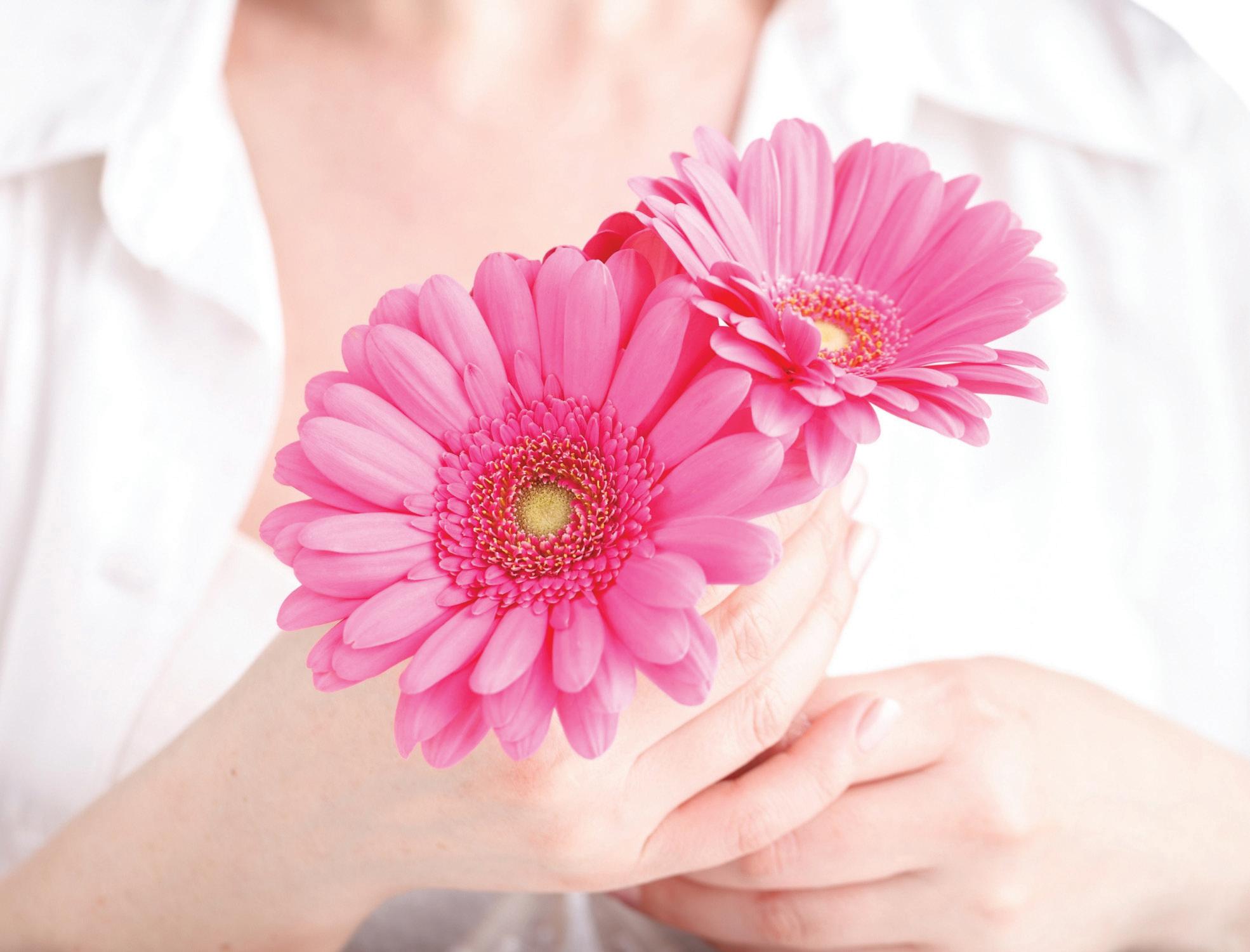
with autoimmune thyroid disease also had an underlying primary adrenal insufficiency. An older study published in The Journal of Clinical Endocrinology & Metabolism in 2009 showed that 41 percent of patients with compromised adrenal function also suffered from hypothyroidism.
“In today’s high-stress environment, our cortisol production can become dysregulated. This is often called ‘adrenal fatigue’, although that term is not recognized by the conventional medicine world,” says Matthew. “This cortisol dysregulation often results in profound tiredness, cravings for salt or sugar, reliance on caffeine for energy and difficulty handling stress.” She notes that despite its widespread occurrence, adrenal compromise slips between the cracks of conventional diagnosis. Recognizing the interconnectedness of bodily systems is vital.
“A holistic approach to thyroid and adrenal health considers the entire spectrum of an individual’s health, lifestyle and emotional well-being,” Matthew says. “Holistic practitioners often employ comprehensive testing to uncover subtle imbalances, utilize natural supplements like adaptogenic herbs to support function and recommend dietary and lifestyle changes that address underlying causes of thyroid and adrenal symptoms.”
Fertility Factors
For many, planning a family is one of life’s high points, but according to the U.S. Centers for Disease Control and Prevention, 13 percent of married women under the age of 30 struggle to conceive; about 22 percent of married women between ages 30 and 39 are hit the hardest. The frustration can be agonizing. “I often say that infertility is not a diagnosis; it’s a symptom,” attests Aumatma Simmons, a double-board-certified naturopathic doctor, endocrinologist and fertility specialist at the Holistic Fertility Institute, in Berkeley, California. “When we consider infertility as a symptom, we start understanding that it is the check-engine light that our body is giving off, trying to tell us something is out of whack. Maybe it’s the hormones or something somewhere else in the body. The root causes must be discovered and addressed.”
Common contributors to infertility include amenorrhea (absent periods) caused by physical or emotional stress, weight extremes (obesity or underweight) and age. Simmons underscores the role of diet and lifestyle in both women and men. “It is well-researched that lifestyle habits like smoking, alcohol and marijuana can contribute to fertility and pregnancy outcomes. Additionally, there is ongoing research
20 Columbia Edition ColumbiaNaturalAwakenings.com
Cherkasov from Getty Images/CanvaPro Feature Story
Andrey
about the role of sedentary lifestyles and body mass index as potential indicators of pregnancy outcomes. Even blood sugar and inflammation in the male partner can impact fertility, as well as a woman’s ability to carry a pregnancy to term.”
Simmons directly attributes food habits to egg and sperm quality, asserting, “Diet is vital in the role of implantation. There are studies that have shown that gut inflammation contributes to uterine inflammation, which directly affects implantation and pregnancy outcomes.” She also connects the dots between the mental and emotional health of both parents and baby success. Negative talk, poor self-esteem, responsibility overload and an inability to let go or ask for help can also foster infertility.
What We Can Do
Taking a few steps toward a more balanced body can go a long way. Cabeca emphasizes, “Deep, restorative sleep is essential to regenerate and rebalance. Physical activity is absolutely necessary for hormone circulation
throughout the blood and lymphatic system, so doing things that make you huff and puff and sweat daily is critical.” She also recommends alkalizing the diet by amping up hydration and fortifying meals with low-carbohydrate food sources, low-glycemic fruits like berries, leafy greens, cruciferous vegetables and sprouts. Adding intermittent fasting to the mix also packs a positive punch, especially as progesterone and estrogen levels decrease with age and we have a higher risk for developing insulin resistance.
Everyday foods for hormonal happiness include healthy, high-fat foods like avocados, raw butter, ghee, egg yolks (rich in choline and iodine for healthy thyroid function), soaked nuts and seeds, flaxseed, hemp and olive oil; clean proteins like quinoa, organic pasture-raised poultry and beef, wild-caught fish, lentils and beans; and spices like turmeric, cinnamon, cumin, garlic and fresh cilantro. Avoid trans fats, sugar and refined carbs, which trigger inflammation and disrupt hormonal balance.
Matthew recommends cortisol-lowering activities like meditation, yoga and breathwork, which help balance cortisol levels, improve our resilience to daily stressors and support overall hormonal health. She also stresses the importance of seven to nine hours of restful sleep by “establishing a consistent bedtime routine, minimizing exposure to blue light from screens before bedtime and creating a sleep-conducive environment in your bedroom. Many of your hormones are produced at night while you are in a deep sleep.” More shut-eye also regulates stress hormones and helps to repair the body’s cells and tissues.
Life is better when our bodies are happy, and change begins with small, inspired steps. Cabeca reminds us, “Create a life rhythm that works for you.”
Marlaina Donato is a visionary artist, composer, author of several books and long-time journalist for Natural Awakenings. Connect at BluefireStudio.art.




21 May 2024
Work from and what you do. A LIFE-CHANGING OPPORTUNITY Natural Awakenings is celebrating our 30th year anniversary and growing! OWN YOUR OWN FRANCHISE Call today: 239.206.2000 Scan code to learn more.
Identifying and Treating Lyme Disease
An Integrative and Functional Medicine Approach
by Jill Valerius, M.D., ABoIM, IFMCP, ATC

Lyme disease, a complex and often misdiagnosed illness, affects approximately 476,000 people annually in the United States. Found in all 50 states and every continent but Antarctica, it is transmitted primarily by the Ixodes tick, more commonly known as the deer tick or black-legged tick. If not promptly addressed, the ailment can lead to long-term health complications. Thanks to advancements in medicine, the identification and treatment of Lyme disease continues to evolve and improve.
Historical Context
The story of Lyme disease began in the 1970s with a community outbreak of facial palsy and arthritis in Lyme, Connecticut. An explanation for this mysterious illness did not surface until the early 1980s, when Willy Burgdorfer, an investigator for the National Institutes of Health, discovered a bacterium in ticks from the area (Borrelia Burgdorferi), laying the foundation for modern testing and diagnostic methods.
Diagnosing a Complex Disease
There are several complicating factors that
make a Lyme disease diagnosis difficult. The characteristic bullseye-shaped rash is present in less than half of cases and may disappear quickly. Early signs and symptoms such as fever, chills, muscle pain, headache, joint pain, fatigue and swollen lymph nodes are easily mistaken for other illnesses.
The utility of early lab testing is limited because the process takes several weeks and can lead to false negatives. This leaves physicians to rely on observable symptoms and rule out other possible causes. A doctor will also ask if a patient has been out in the woods or grassy areas where they might have been exposed to black-legged ticks.
Tom Moorcroft, DO, the founder of Origins of Health and an investigator of medical mysteries, refers to Lyme disease as “the new great imitator and instigator,” describing its ability to mimic various other diseases, often at the same time. For people experiencing persistent symptoms, comprehensive lab testing may be needed to distinguish between Lyme and other tick-borne and nontick-borne diseases.
Treatment Options
According to the U.S. Centers for Disease Control and Prevention (CDC), untreated Lyme disease can produce a wide range of symptoms, including fever, rash, facial paralysis and arthritis. While conventional antibiotics remain a cornerstone for early-stage treatment, emerging research increasingly recognizes and supports the role of natural and botanical medicine.
In a 2020 study published in Frontiers in Medicine, seven botanical agents were identified as promising treatments for Lyme disease, including black walnut, Japanese knotweed, sweet wormwood, cat’s claw and Chinese skullcap. Cryptolepis sanguinolenta extract caused a complete eradication of the B. Burgdorferi bacterium in their study. The scientists recommended additional research to determine dosages and extract combinations that might offer hope for those suffering long-term symptoms.
The integrative and functional medicine approach to treating Lyme disease is multifaceted and customized, taking into account an individual’s health history, environmental factors and unique physiological responses. The overarching goals are to target the infection, bolster the immune system, manage symptoms and promote overall well-being. According to Dr. Darin Ingels, a licensed doctor of naturopathic medicine and author of The Lyme Solution, “All other therapies, no matter what they are, probably aren’t going to be as effective until you’ve really taken care of your gut health and your mental and emotional being.”
Lifestyle interventions are critical in this holistic treatment. A diet rich in whole foods, clean proteins and minimal grains, dairy, sugar and processed foods can mitigate inflammation and aid recovery. Complementary practices such as regular exercise, sauna sessions, Epsom salt baths, sufficient sleep and stress management techniques play vital roles in healing and preventing long-term complications.
22 Columbia Edition ColumbiaNaturalAwakenings.com Healing Ways
Erik Karits from pixabay/CanvaPro
Prevention Tips
Prevention is integral in combating Lyme disease. Tick repellents and protective clothing can significantly reduce bites. After spending time in wooded or grassy areas, thoroughly check the skin for early tick detection and removal. Upon discovering a tick, remove it promptly and monitor the bite area for signs of a rash or infection. If symptoms appear, quickly seek guidance from a healthcare professional with expertise in Lyme disease.
A healthy diet, regular exercise and sufficient sleep are essential for maintaining a robust immune system and can bolster the body’s defenses, potentially reducing the risk of developing chronic Lyme disease.
Staying Informed
• International Lyme and Associated Disease Society (ilads.org) is a global nonprofit that promotes research, education and policy associated with Lyme and associated diseases.
• LymeDisease.org offers support and information curated by patients.
• TickSpotters from the University of Rhode Island (Tinyurl.com/tickspot) provides tick identification information and science-based risk assessments.
• Local health departments can provide updated information and recommendations for specific areas.
Meeting Future Challenges
Lyme disease presents a significant global health challenge, necessitating a multifaceted and individualized approach to its management. Integrative and functional medicine offer an effective strategy, combining conventional medical treatments with lifestyle and natural therapies. This holistic approach empowers individuals to take an active role in their health journey, ensuring not just the treatment of Lyme disease, but also the promotion of long-term wellness and quality of life.
Jill Valerius is a dual-board-certified physician in family and integrative medicine with an additional certification in functional medicine. Learn more at NowHealthPalmer.com.


23 May 2024
Raising Puppies to Be Heroes
How to Foster Guide-Dog Candidates
by Ruth Roberts, DVM, CVA, CVH, CVFT, NAN

Fostering puppies to become guide dogs or service animals can be a deeply meaningful endeavor. Beyond being loyal companions, these special pups profoundly impact the lives of people with disabilities by offering mobility and a newfound sense of freedom. They not only assist in navigation but also pave the way for social opportunities and contribute to the overall happiness and well-being of their owners.
In a 2019 study published in the journal Animals, Austrian researchers compared the quality of life and annual medical costs of 36 blind individuals with and without a guide dog by means of a standardized questionnaire. Although no significant differences in quality of life were noted, the guide-dog owners reported lower medical costs and expressed a firm belief that their canine companions facilitated social contacts and had a positive impact on their independence and health.

Critical Role of Foster Families
Breeds known for their intelligence and temperament, such as Labradors, golden retrievers and German shepherds, are preferred choices. Their guide-dog journey begins just days after they are born, when foster families take them in and expose them to new experiences, sounds and surfaces, along with early tutelage in body handling, kennel training and wearing a puppy jacket.
At 8 weeks old, the pups begin to learn good manners and socialization skills. This period is pivotal in preparing them for formal service-dog training. Nearly half of the canines bred to become guide dogs fail before the end of their training because they are skittish and fearful. In a 2021 study, also published in Animals, French researchers sought to understand the nature and causes of such fears by observing and measuring stress biomarkers of 5-month-old guide-dog candidates as they were exposed to unfamiliar people, visual and sound stimuli, and physical handling.
The scientists concluded that the more time a puppy spent alone, the more likely it was to be afraid, underscoring the importance of early socialization and habituation to boost confidence and adaptability by exposing them to different people, animals and environments. The researchers
24 Columbia Edition ColumbiaNaturalAwakenings.com
Natural Pet
FamVeld from Getty Images/CanvaPro fotojagodka/CanvaPro
characterized the early development period of puppies as “a decisive phase influencing their temperament in adulthood,” thereby enhancing their chances of success as guide dogs.
Fostering Tips
Caring for a guide-dog candidate during its formative first months can make or break the animal’s future performance. Here are a few tips for foster parents.
• Offer positive reinforcement. Celebrate small wins, maintain a positive attitude and apply consistent commands and routines when training a guide dog. This strategy not only builds a solid foundation but also speeds up the learning process and minimizes stress for both trainers and puppies.
• Provide rewards and discipline. Treats, praise and playtime encourage puppies to repeat desired behaviors. Simultaneously, it is important to set boundaries and enforce rules to guide their behavior, ensuring they grow into well-behaved guide dogs.
• Ensure their health. Regular veterinary check-ups, vaccinations and a balanced
diet are crucial to keeping the puppy healthy and ready for training. A physically fit pooch is more capable of focusing and learning during training sessions.
• Learn to let go. Recognize that saying goodbye is part of the process when the puppy is ready to move on to specialized training or to be paired with their person. Focus on the incredible impact the dog will have on someone’s life.
• Communicate with the experts. Always seek support and advice from the training organization and document the puppy’s progress. This will help the foster family avoid missteps or make early corrections in caretaking and training. Future trainers or handlers will also benefit from the documentation.
• Stay informed. Keep up to date on new training techniques and trends in the field of service animals to enhance the fostering experience.
Training Programs and Organizations
After leaving their foster families, usually around the age of 12 to 18 months, guide-dog candidates will enter a formal training program, such as the one offered by the nonprofit Guide Dogs for the Blind, the largest school of its kind in North America, with campuses in California, Oregon and Canada. Here, the young canines learn specialized skills needed to assist their future owners—a process that takes at least another year. All of the training and support is provided free of charge, made possible by donors and volunteers.
To learn more, visit Guide Dogs for the Blind (GuideDogs.com), Seeing Eye Dogs (SeeingEye. org) and Guiding Eyes for the Blind (GuidingEyes.org). There are numerous ways to help these organizations such as volunteering time, donating money, fostering puppies or assisting in awareness campaigns.
Ruth Roberts is an integrative veterinarian and holistic health coach for pets, as well as the creator of The Original CrockPet Diet. Learn more at DrRuthRoberts.com.

25 May 2024

Female Environmentalists
Women Pursuing a Sustainable World
by Kelcie Ottoes
English author Virginia Woolf once said, “For most of history, Anonymous was a woman,” illustrating the predicament of accomplished females that never received the recognition they were due. One example was Eunice Newton Foote, who presented her findings on the greenhouse effect at the 10th annual meeting for the American Association for the Advancement of Science in 1856, only to be eclipsed by John Tyndall, who was credited for this discovery even though his work on the subject was carried out two years later.
In 2013, the United Nations General Assembly adopted a resolution pronouncing that “full and equal access to and participation in science, technology and innovation for women and girls of all ages is imperative for achieving gender equality and the empowerment of women and girls.” In recent years, impactful women like African American space scientist and mathematician Katherine Johnson and Hispanic astronaut Ellen Ochoa have begun to be acknowledged for their contributions to science, technology, engineering and mathematics (STEM). Still, many more women remain on the sidelines.
Only 30 percent of the world’s researchers and less than one-third of the STEM workforce are women. Paradoxically, women are more impacted by climate change than men, given that 70 percent
of individuals living in poverty are women. Females have less access to resources and education and are often dependent on natural resources that are impacted by global warming for their livelihood.
“Climate change affects everyone. It does not discriminate, yet, sadly, women’s voices are not heard enough, and women are even invisible at times,” says Sangeeta Waldron, author of Corporate Social Responsibility Is Not Public Relations. “Women, particularly in vulnerable regions, are the first to be impacted by climate change, as they are the ones who will need to collect the water from distant wells or rainfall when there is a drought; or who work on farms when the male members of their families have gone to the cities to earn a living, when their crops run dry due to lack of rain or in some places have too much rain; or who fight against the big fossil fuel companies that encroach on their land, organizing their community to fight back.”
Waldron also laments, “Neither do we see enough female representation at the negotiating table when discussing climate policies. The latest data and images from COP28 [28th Conference of the Parties to the United Nations Framework Convention on Climate Change] reinforce this; 140 world leaders were scheduled to speak, and only 15 were women. It highlights the gender gap despite improvements from previous COPs.”
26 Columbia Edition ColumbiaNaturalAwakenings.com
Green Living
Melpomenem from Getty Images/CanvaPro
Six Female Environmental Leaders
“Many women are playing a tremendous role in the green economy and are creating a sustainable, just and resilient economy,” says Quinn Antus, the program manager of emerging markets, carbon management and carbon dioxide removal for the state of Colorado. Here are some examples of female champions.

Yohana Tesfamariam Tekeste developed a new type of insurance to help farmers in eastern and southern Africa reduce their vulnerability to climate change. Haein Shin supports international education development, curating content about the environment, digital and financial literacy, and employment readiness. Nzambi Matee, a Young Champion of the Earth recipient, created bricks made of discarded plastic waste, finding a solution for littering and the housing crisis in Kenya. Naomi Davis founded Blacks in Green, which strives to be a national network for environmental justice and economic development that closes America’s racial health/ wealth gap.
Zoë Gamble Hanes is the president of CleanChoice Energy, which helps make renewable energy accessible for all through solar farms and other clean-energy solutions. She says, “Sustainable practices only benefit from bringing in diverse voices. We’ve found ourselves in the midst of a new-age industrial revolution that requires a diverse talent pool to reach success. By empowering more women to join sustainable efforts—especially within the renewable energy sector that has traditionally been a male-dominated industry—we can usher in a new generation of passionate leaders with different, and important, perspectives, all working toward the goal of creating a greener, more sustainable future for years to come.”
Girl Power Is Sustainable Power


NATIONAL PRODUCT PICKS


Therasage is the gold standard for energy healing, naturally healing infrared, negative ions and eliminating EMFs.
Therasage.com
Scan to register for educational webcast to learn more.


Sensiband is the simple, affordable, at-home self-test for metal allergies before joint replacement surgery.
Sensiband.com
Scan to register for educational webcast to learn more.
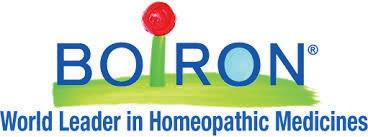

Founded in 1932, Boiron, the world leader in homeopathic medicines, is best known for its popular Arnicare® line of pain relievers and Oscillococcinum® flu reliever.
BoironUSA.com
Save 20% with code NA20
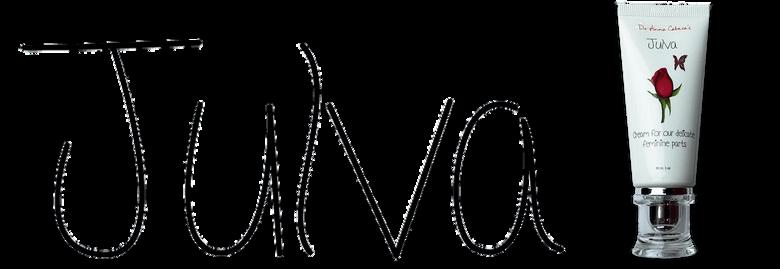
Including women in sustainability is not just about equality, it is about leveraging human talent, insights and creativity to address climate change, food insecurity, equity and other pressing issues of our time. The facts are that the global temperature is rising, the ocean is getting warmer, extreme-weather-related events are increasing in frequency and glaciers are melting. Our best hope for addressing these issues is if everyone participates.
Kelcie Ottoes is a copywriter and content creator specializing in sustainability and environmental topics.


OB/GYN-formulated with DHEA and Alpine Rose Stem Cells. Rejuvenates vaginal tissue, restores natural moisture, and helps prevent bladder leaks.
DrAnnaCabeca.com/ products/julva
27 May 2024
Courtesy Sangeeta Waldron
Sangeeta Waldron
We Have a Choice

In times like today, when every aspect of society seems to be in chaos, one easy response is to escape—through
drugs, alcohol, comfort food, non-stop entertainment or any other convenient mind-numbing practice. Many are defaulting to this “cure” for their discomfort. Others, feeling insecure, angry, and demanding change, agitate to take society back to what they remember as the “good old days ” They may not be clear about what exactly made the past better, but are more than willing to listen to people who place the blame for current troubles anywhere but where it actually belongs: on economic inequality and injustice.
A Major Transition
Most of us forget that another choice is possible. We can create a future completely di erent from the present or the past—one that expresses our most deeply felt desires to live together in peace, happiness, and prosperity In fact, this choice is being reinforced, or perhaps stimulated, by the planetary energies now at play We are currently in the midst of a major transition between two ages moving from the Age of Pisces into the Age of Aquarius, and such transitions tend to create chaos as the energies of the two constellations involved compete with each other The energies of Pisces support individuality and devotion to separate religions or causes, while Aquarian energies promote cooperation, group e orts, synthesis, and brotherhood. As our planet moves closer to Aquarius, the
polarization and divisions among people and ideas will diminish, and we will find more common ground
So, now is the time to take advantage of the energies and to put forth visions of a world that would benefit all people—not just a few. In mundane terms, we need to expand the “Overton window”—the range of ideas that voters find acceptable—to include ideas that are not currently in the public eye—ideas that might at first be considered idealistic or even impossible to attain. For politicians to support policies outside of the window would be political suicide, as they would not be seen as legitimate options by society Therefore, since it’s politicians who will be deciding the policies that will determine our future, we need to voice our desires for the kind of world we want, to make sure they are among the available options in the public discourse.
The Key: A Unified Vision of Sharing and Justice
How do we bring our ideas forward? The key is to have a unified vision, to voice it in large numbers, and to do so powerfully Fortunately, we don’t have to do this alone. We have help in the form of the great spiritual teacher—Maitreya by name who is here to accompany our transition into the Aquarian age, and we will see him soon He has said that peace can be established and our societal ills transformed by simply sharing planetary resources more equitably, creating justice in every societal institution, and restoring and
preserving our environment. We can count on him to galvanize people of goodwill to champion these priorities when he appears publicly, but we can start now
We can talk about the future we want to our friends and relatives, call and write the president and our Congressional representatives on a regular basis about it, and spread the ideas through our social media outlets There is power in numbers, and the 99% of us non-wealthy are by definition the majority. We just need to project our vision of sharing and justice powerfully in as unified a way as possible everywhere, and together we can create a future that works for everyone.
For free information: Share-international.us 888-242-8272 info@share-international.us
Free Download!
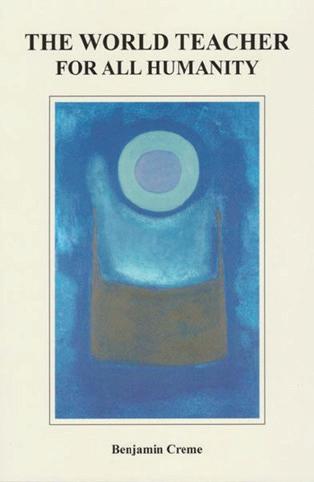
TO DOWNLOAD: bit.ly/world-teacher or scan QR code with your smart phone camera
In The World Teacher for All Humanity, Benjamin Creme discusses the extraordinary ramifications of Maitreya’s appearance and teachings. Awaken to a world of infinite possibility if we’re all willing to share!

28 Columbia Edition ColumbiaNaturalAwakenings.com
AD VERTOR IA L

Calendar of Events
To place a calendar/ongoing/classified event, email content to ColaPublisher@NaturalAwakenings.com. Entries must adhere to our guidelines and be submitted by May 12 (for June issue). Costs $20 for 35 words each month. Call ahead before attending events to avoid any cancellations or changes.
Dowdy Rudolph Chiropractic–We are consciously scheduling appointments. We are sanitizing our office and waiting areas throughout the day and wearing personal protective gear. Call 803-376-6293 to schedule an appointment.
TUESDAY, MAY 7
Sip and Plant Workshop–6:30-8pm. Terrariums. Get your hands in the soil as you create your own terrarium. Price includes the cost of supplies! Cost: $45. Gardener’s Outpost, 1211 Franklin St, Columbia. Info/tickets: 803851-1905, GardenersOutpost.com.
SATURDAY, MAY 11
Truth, Simplicity and Love–9:30am-2:30pm. Learn the tools needed to awaken the spirit within, which will lead to truth, simplicity and love. Lunch included. Info/cost/location: Call Parrie Kandis at 803-606-0621.
WEDNESDAY, MAY 15
Ask the Gardener “Happy Hour”–4-6pm. Organic Solutions to Pests and Diseases. Bring your plants and your questions. We’ll dig into the best ways to keep your plants happy and healthy. Free. Gardener’s Outpost, 1211 Franklin St, Columbia. Info: 803-851-1905, GardenersOutpost.com.
SATURDAY & SUNDAY, MAY 18 & 19
Ganesha Color Splash–2-7pm. A virtual medicine painting class for women to overcome obstacles or resolve trauma, transforming pain into possibility; shift stuck patterns and beliefs. Cost: $125, scholarships available. Info: Contact MaryJo Briggs at 803-537-1234 or PaintwMJ@gmail.com.
TUESDAY, MAY 21
Sip and Plant Workshop–6:30-8pm. Kokedamas. Learn the interesting history and delightful process of creating kokedamas. Cost: $35. Gardener’s Outpost, 1211 Franklin St, Columbia. Info/tickets: 803851-1905, GardenersOutpost.com.
FRIDAY, MAY 24
Gardener’s Outpost Live Music–69pm. Featuring Paisley Marie. Free admission. Gardener’s Outpost, 1211 Franklin St, Columbia. Info: 803-851-1905, GardenersOutpost.com.
THURSDAY, MAY 30
Radiant Holistic Healing Health Talk–6pm. Learn the science behind food cravings and what to do about them. Free. 14 Carrot Whole Foods, 5300 Sunset Blvd, Lexington. Info/ RSVP: Email tobrien.14carrot@gmail.com.
PLAN AHEAD
MONDAY, JUNE 3
Camp Discovery Summer Camps–Summer camps for kids and teens ages 6 to 15 to discover, explore and connect with the natural world around them. Activities include hiking, scavenger hunts, arts and crafts, outdoor games, and more. Camp Discovery, 208 Claude Bundrick Rd, Blythewood. Info: 803-239-6006, ContactUs@CampDiscoverysc.org.
Ongoing Events
Sunday
Virtual Healthy Living Support Group–7pm. Every third Sunday. Virtual support group via Zoom. Uplift, support and encourage one another while making necessary changes for better health and wellness. Donations accepted. Info/register: Contact Ms. Tracy at 833-678-7229 or OriginalOriginshw@gmail.com.
Monday
Healing Through the Chakras–10am. Every second Monday. Discover your inner world with empathy and energy healing for lasting personal transformation. Group meeting via Zoom. Donations accepted. Info/register: Text Grace at 303-903-4936 or Grace@GraceMosgeller.com.
Wellness Patch Zoom Party–4pm. Every third Monday. Wearing a wellness patch for a few months can relieve pain, support better sleep, leaves you energetic and more. Free. Info/register: Text Grace at 303-9034936 or email Grace@GraceMosgeller.com.
Wednesday
Garden Asana Grass Roots Yoga–8:159:15am. Every Wednesday and Thursday. This class is for everyone and is breath-centric with opportunities for personal adjustments and alignment guidance. Hosted by Mitchell Hughes, of Grass Roots Yoga. Cost: $15. RSVP by paying online via Venmo (MitchellCHughes) or via PayPal (Mitchell@ GrassRootsYogaSC.com). Gardener’s Outpost, 1211 Franklin St, Columbia. Info: 803-851-1905, GardenersOutpost.com.
Foot Savi Stretch and Stroll for the Sole–67:30pm. Every Wednesday. Light refreshments at 6pm. Thirty-minute easy, guided stretches (better than yoga), then a 30-minute stroll on an adjacent path. Free. FootSavi Foot Care, 7001 St Andrews Rd, Ste 16, Columbia. Info: Call 803-781-1269 or Zoe Owen at 803-4797859, or visit FootSaving.com.
Thursday
Group Grace Healing Session–7pm. Every Third Thursday. Reiki, full-spectrum and unique healings to bring about a state of peace, relaxation, harmony and joy for you. Info/register: Text Grace at 303-903-4936 or email Grace@GraceMosgeller.com.
Friday
Feel Good Friday at Foot Savi Spa–New or existing clients book your Perfect Feet treatment on a Friday and get $10 off. FootSavi Foot Care, 7001 St Andrews Rd, Ste 16, Columbia. Info: 803-781-1269, FootSaving.com.
29 May 2024
Now Hiring Garner’s Natural Life FT/PT help; previous wellness experience a plus! Email Resume to: GarnersNick@gmail.com 4840 Forest Dr, Ste 15a, Columbia 803-454-7700 | GarnersNaturalLife.com
Community Resource Guide
Connecting you to the leaders in natural health care and green living in our community. To find out how you can be included in the Community Resource Guide, call 803-309-2101 or email ColaPublisher@NaturalAwakenings.com.
AROMATHERAPY
GARNER’S NATURAL LIFE
4840 Forest Dr, Ste 15-A, Columbia Trenholm Plaza, in Forest Acres 803-454-7700 • GarnersNaturalLife.com
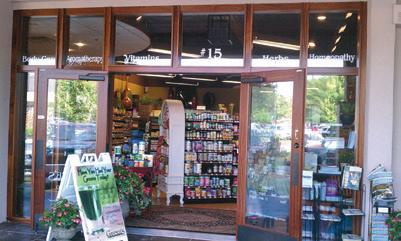
Improve your level of stress, depression and mood with natural products from a locally owned family business. Our knowledgeable staff will guide you using aromatherapy for pain, anxiety, energy enhancement and more. We carry several brands of essential oils, including doTERRA. See ads, page 2 and back page.
ART THERAPY
MARYJO BRIGGS ART
MaryJo Briggs PaintwMJ@gmail.com
MaryJoBriggsArt.com

Ganesha Color Splash: A medicine painting journey for women to overcome obstacles or resolve trauma. In this virtual class, you will learn to transform pain into possibility, shift away from stuck patterns and beliefs, and discover the four personal systems that need to be simultaneously healed to achieve a permanent and lasting freedom from pain, or whatever is holding you back in life. See full class description here: Tinyurl.com/ MaryJoBriggs.
CHIROPRACTIC
DOWDY RUDOLPH CHIROPRACTIC LLC
Dr. Dowdy Rudolph, DC 1444 Barnwell St, Columbia 803-376-6293 • DowdyRudolphChiro.com
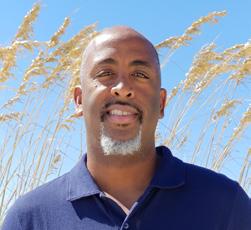
Dr. Gerald Rudolph, DC, focuses on finding the root cause of your problems and not just treating your pain. He utilizes digital X-rays to help diagnose problems, spinal adjustments to stimulate proper movement of spinal and extremity joints, active therapeutic movement exercises to correct movement disorders, and spinal decompression to help relieve numbness and tingling down your arms and legs. Dowdy Rudolph Chiropractic also offers a state-of-the-art full-body lounge hydromassage table that can help you feel more rejuvenated and relaxed. See ad, page 6.
COLON HEALTH
SPRING RAIN HYDROTHERAPY
Linda Salyer
120 Kaminer Way Pkwy, Ste H, Columbia 803-361-2620 • LSalyer@ymail.com

All disease begins in the colon. Constipation; slow, sluggish bowel; gas and bloating? A colonic will help to rid you of these problems. Colonics promote good digestion, help speed metabolism, help lower cholesterol, and help relieve joint pain. Linda Salyer is IACN certified and a retired nurse. Saturday appointments available with an additional small convenience fee. See ad, page 15
FOOT CARE
FOOT SAVI
7001 St Andrews Rd, Ste A Certified Board Pedorthist and Brace Specialist 803-781-1230 • FootSavi.com
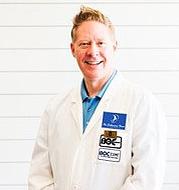
With more than 30-plus years in the footcare/footwear industry, Sion Owen helps with a variety of issues, including gait analysis, foot assessments, custom orthotics, bracing and compression therapy, plantar fascia pain, neuropathy and fitting for therapeutic shoes for patients with diabetes, arthritis, painful bunions, callouses and hammer toes. Call to schedule an appointment! See ad, page 6.
HEALTH & WELLNESS
ABOUT YOUR HEALTH INC
120 Kaminer Way Pkwy, Ste J, Columbia 803-798-8687 • AboutYourHealthSC.com

About Your Health Inc’s main focus is health education and health-enhancing services, including One-on-One Nutritional Counseling, Live/Dry Blood Cell Observation, Mild Hyperbaric Chamber, Ozone Therapies, Thermography, Aqua-chi Footbath, Far Infrared Sauna and more. They also carry hard-to-find natural, organic, wholefood nutritional supplements and products. See ad, page 23
The mother’s heart is the child’s schoolroom.
—Henry Ward Beecher
ORIGINAL ORIGINS HEALTH AND WELLNESS
Tracy R. Jacox • 833-678-7229
OriginalOriginshw@gmail.com
OriginalOriginshw.com

Ms. Tracy has over 30 years of experience in the medical field. The mission of Original Origins Health and Wellness is to educate, equip and empower the community to adopt a predominately whole food, plantbased lifestyle, which will improve and optimize your quality of life, health and wellness while preventing, delaying, reversing or eliminating chronic illnesses. Original Origins can assist you with maximizing your health and wellness holistically! Our wide range of services include health coach partnering, comprehensive health evaluations, comprehensive cooking experiences, and a comprehensive kitchen evaluation. Your health is your wealth! See ad, page 25
YOUR WELLNESS PATCHES
Grace Mosgeller
303-903-4936 (text only please) Grace@GraceMosgeller.com
YourWellnessPatches.com
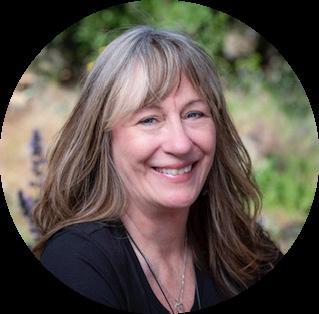
Live a healthier and more active lifestyle by triggering your body to heal naturally from within. Wearing the patches that I offer for just a few months can help relieve your pain, enhance your energy and vitality, improve sleep, and relieve symptoms of illness. They also enhance sports performance, stimulate faster recovery from exercise and much more. To learn more, watch a free Wellness Patch information video or contact me directly at YourWellnessPatches.com. See ad, page 7.
HOLISTIC NUTRITION
RADIANT HOLISTIC HEALING
Kristen Turpen
Board-Certified Holistic Nutritionist 839-207-0057
RadiantHolisticHealth@hotmail.com
RadiantHolisticHealing.net
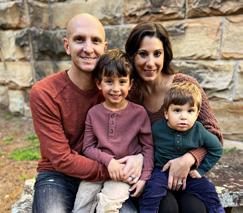
Kristen uses personalized nutritional therapy, herbal medicine, individualized nutritional supplements, stress-management techniques, assistance with detoxification, and lifestyle modification to help restore optimal bodily function and balance. All treatment plans are customized to each individual’s needs. “My goal is to help treat and heal the entire body from suffering caused by any illness. One’s health is an
30 Columbia Edition ColumbiaNaturalAwakenings.com
expression of the complex interchange between the physical, environmental, chemical, mental, spiritual, as well as emotional aspects of one’s life and being.” See ad, page 17.
HOLISTIC WELLNESS
NATURAL BEING HOLISTIC WELLNESS SPA & CENTER
1911 Barnwell St, Ste C, Columbia 803-708-8612 • nbhwsc.com
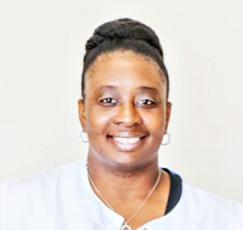
We are a very unique health and wellness center designed to help you discover a more natural and healthier way of living. Are you in need of a total detox? Do you want to rid your body of toxins or need to lose inches and burn 300 calories in 30 minutes? If you answered “yes” to these questions, then come embark on a healthy journey with us! Our extensive list of professional services includes foot detoxing, infrared sauna body wrapping, vaginal/yoni steaming, and vaginal rejuvenation. Owner and operator Sherino L. Maple is now offering complimentary consultations. Call today to book a consultation.
1 WITH NATURE THERAPIES
Amber Addy, CHHP
3937 Sunset Blvd, W Columbia 803-269-9835
1WithNatureTherapies@gmail.com
1WithNatureTherapies.com

Amber is a certified holistic healthcare practitioner and sees clients by appointment only. The first consult includes a study history and background, a physical exam, a urine test (RBTI), muscle testing and recommendations. Iridology and a Bach Flower consult are available upon request. Health services include, but are not limited to, homeopathic options. Other services include Traditional Chinese Medicine modalities, such as acupressure and reflexology, energy healing, TMP lamp, herbal recommendations, aromatherapy, and mud packing, among others. See ad, page 15
INTEGRATIVE & HOLISTIC MEDICINE
EXPECT WELLNESS
Dr. Rachel Hall 130 Suber Rd, Columbia 803-796-1702 • DrRachelHall.com ExpectWellness@sc.rr.com
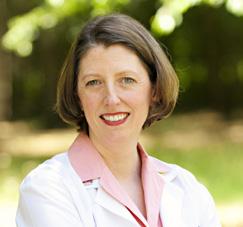
a consult if you are looking to achieve balance. In-house diagnostic labs and therapies. See ad, page 3
LOCAL RETREAT
JOY LEE CONNOR
Healing Minster at Springhill AtONEment Center 803-447-6499

Joy has more than 30 years of experience in energy and bodywork. She teaches Reiki, Touch for Health, Meditation, Yoga, Ayurveda and A Course in Miracles. Joy welcomes and sees clients who are ready to shed guilt and limitations in favor of forgiveness and freedom. One hundred acres of trees surround this pristine location for healing at Springhill AtONEment Center. Nature walks and fireside gatherings available. Contact Joy at 803-447-6499
PREGNANCY/ LACTATION
GRACEFUL BEGINNINGS BIRTH
Lindsay Bryan, CD(DONA)

404-314-0363 • GracefulBeginningsBirth.com
As your doula, my goal is to provide you and your partner with the support, care, understanding and information you need throughout the birthing process. Beginning with natural birth education and assistance with birth plans through in-person prenatal appointments and birthing support, we will work together to achieve your birth goals. Postpartum services include lactation care as well as a functional assessment for ties and oral tethers. Birth photography is also available.
THERMOGRAPHY
ABOUT YOUR HEALTH INC
120 Kaminer Way Pkwy, Ste J, Columbia 803-798-8687 • AboutYourHealthSC.com

Our main focus is health education and health-enhancing services. One-onone nutritional counseling, Mild Hyperbaric Oxygen Therapy, Reams pH testing, parasite programs, aquachi footbaths, far infrared sauna, weight-loss programs, and thermography. Hard-to-find natural, organic, whole food nutritional supplements, raw foods and natural household items. See ad, page 23.
VITAMINS & SUPPLEMENTS
GARNER’S NATURAL LIFE
4840 Forest Dr, Ste 15a, Columbia 803-454-7700 GarnersNaturalLife.com
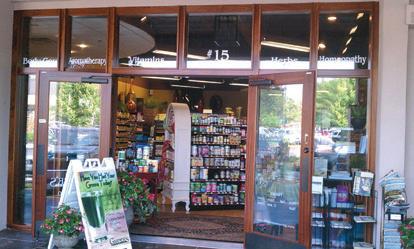
At Garner’s Natural Life, we offer the purest, most innovative high-quality natural products. With more than 130 collective years of wellness experience! Allows us to encourage your healthy choices. See ads, page 2 and back page.





Find us on Facebook for great health tips. Integrative/Holistic medicine consults for anyone wanting to approach their health more naturally. Dr. Rachel Hall is board certified in both family medicine and integrative holistic medicine. Together we will focus on finding the root of the problem, not just treating symptoms. Call today for
—Zen Shin
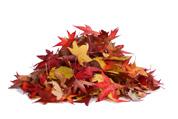
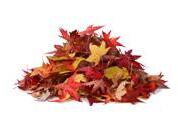



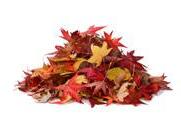
| 1800gotjunk.com
31 May 2024
Connect with us naturally!
Goodbye Junk. Hello Relief. 1-800-468-5865
Trusted Junk Removal Since 1989 A flower does not think of competing with the flower next to it. It just blooms.









































































































